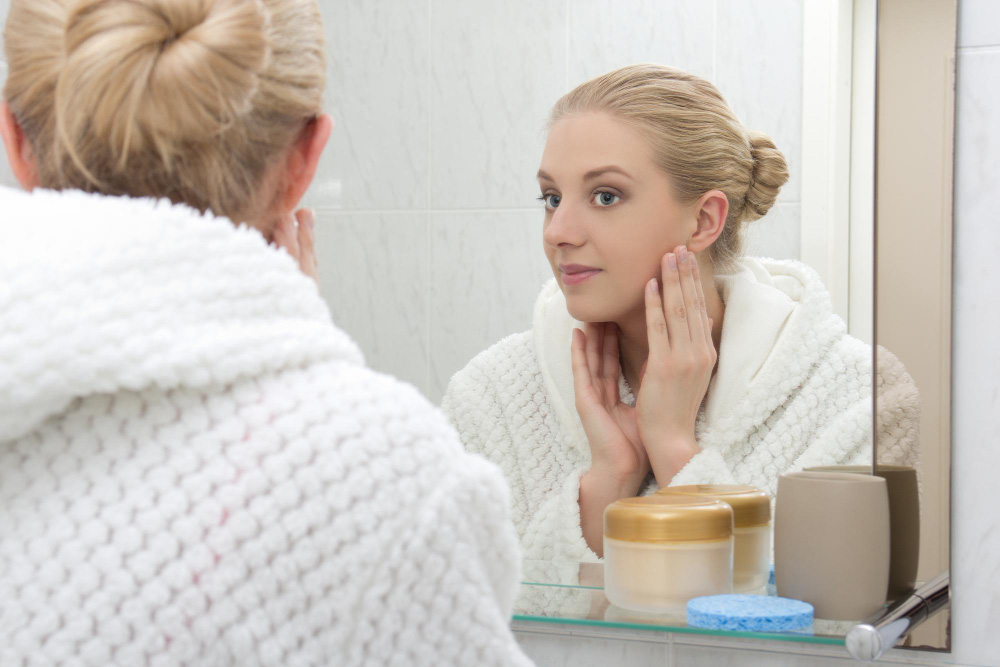Hydrating vs. Moisturizing: Understanding the Difference and Why Both Are Essential January 16, 2025

When it comes to skincare, terms like “hydrating” and “moisturizing” are often used interchangeably. However, they address different needs of your skin and play distinct roles in your skincare routine. Whether you’re living in the humid climate of Dubai, braving the dry conditions of the United Arab Emirates (UAE), or experiencing seasonal changes in Lebanon, understanding the difference between hydrating and moisturizing is key to achieving healthy, glowing skin. This comprehensive guide will help you learn the distinctions and how to incorporate both into your skincare routine for optimal results.
1. What Does Hydrating Mean?
Hydration refers to the water content in your skin. When your skin is hydrated, it appears plump, dewy, and elastic. Dehydrated skin, on the other hand, can look dull, feel tight, and even show signs of premature aging such as fine lines and wrinkles.
Hydrating products are formulated to replenish the water content in your skin. Ingredients like hyaluronic acid, glycerin, and aloe vera attract water to your skin and lock it in, improving its overall hydration levels. For people in Dubai and the UAE, where the weather can be arid, using hydrating products is essential to combat dehydration caused by heat and dry air.
2. What Does Moisturizing Mean?
Moisturizing, on the other hand, focuses on sealing in hydration and preventing water loss. Moisturizers typically contain emollients, occlusives, and humectants that form a protective barrier on the skin to lock in moisture.
In places like Lebanon, where seasonal changes can leave your skin feeling dry during the colder months, moisturizing helps maintain the skin’s barrier function and keeps it smooth and soft. Moisturizing is especially important after hydrating to ensure that the water added to your skin doesn’t evaporate.
3. The Difference Between Hydrating and Moisturizing
While hydration and moisturization are related, they are not the same. Here’s a simple breakdown:
- Hydrating: Adds water to the skin. Ideal for dehydrated skin that feels tight and lacks elasticity.
- Moisturizing: Locks in hydration and prevents water loss. Essential for dry skin that feels rough and flaky.
Think of hydration as quenching your skin’s thirst and moisturization as sealing that hydration to prevent it from escaping.
4. Why Both Are Essential for Healthy Skin
Both hydration and moisturization are vital for maintaining healthy skin. Hydration keeps your skin cells functioning properly, while moisturization ensures that the hydration remains intact. Neglecting either can lead to a compromised skin barrier, making your skin more prone to irritation, sensitivity, and environmental damage.
For individuals in Dubai and the UAE, a combination of hydrating products and moisturizing products can combat the effects of heat and air conditioning, both of which can dehydrate your skin. Similarly, in Lebanon, incorporating both steps helps protect your skin from varying weather conditions.
5. How to Incorporate Hydrating and Moisturizing into Your Routine
Step 1: Identify Your Skin’s Needs
Pay attention to how your skin feels. If it feels tight and lacks elasticity, it needs hydration. If it feels rough or flaky, it needs moisturization. In many cases, your skin may need both.
Step 2: Use a Hydrating Serum
After cleansing, apply a hydrating serum with ingredients like hyaluronic acid or glycerin. These serums attract water to your skin, leaving it plump and refreshed.
Step 3: Apply a Moisturizer
Follow your hydrating serum with a moisturizer to lock in the hydration. Choose a lightweight moisturizer for oily skin or a richer cream for dry skin.
Step 4: Don’t Forget Sunscreen
In sunny locations like Dubai and the UAE, sunscreen is a must to protect your skin from UV damage, which can exacerbate dehydration and dryness.
6. Choosing the Right Products
Here are some tips for selecting hydrating products and moisturizing products:
- For Dehydrated Skin: Look for serums with hyaluronic acid, aloe vera, or glycerin.
- For Dry Skin: Opt for moisturizers with ceramides, shea butter, or squalane.
- For Combination Skin: Use a hydrating serum with a lightweight, gel-based moisturizer.
Many products in the Dubai and Lebanon beauty markets are formulated specifically to address the challenges posed by their respective climates.
7. Tips for Maximizing Hydration and Moisturization
- Drink Plenty of Water: Internal hydration is just as important as topical hydration. Aim to drink at least 8 glasses of water daily.
- Use a Humidifier: In dry environments like Dubai, a humidifier can add moisture to the air, preventing your skin from drying out.
- Avoid Harsh Cleansers: Choose gentle, hydrating cleansers that won’t strip your skin of natural oils.
- Layer Products Correctly: Always apply hydrating products before moisturizing to lock in hydration effectively.
Conclusion
Hydrating and moisturizing are essential steps in any skincare routine. Understanding the difference between the two ensures that your skin gets the care it needs to stay healthy, radiant, and resilient. Whether you’re navigating the heat of Dubai, the changing seasons in Lebanon, or the dry conditions of the UAE, incorporating both hydrating products and moisturizing products can make a world of difference. By tailoring your routine to your skin’s needs, you can achieve the glowing complexion you’ve always desired.
